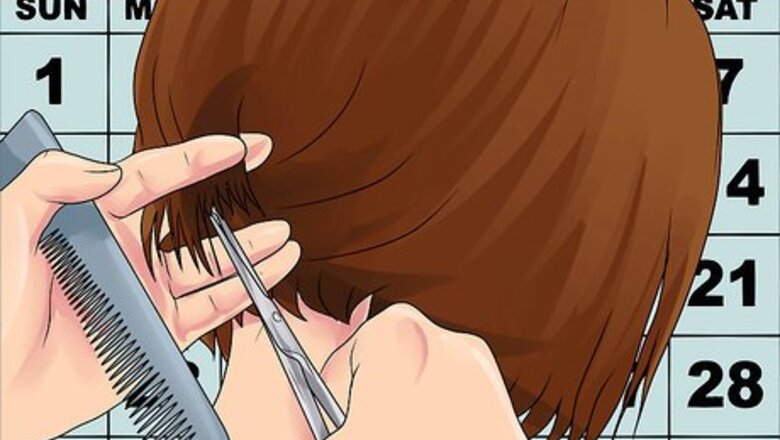
views
Transitioning a Pixie Cut to a Bob
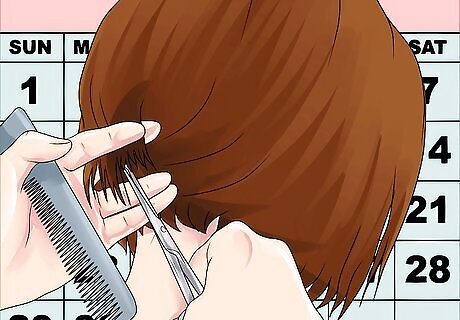
Wait an additional two weeks between trims. As you grow out your hair, you should continue to visit your stylist on a regular basis for trims. However, you should extended the time between your trims. This will promote growth and help you stay on top of your split ends. For example, instead of getting a trim every eight to ten weeks, go to the salon every ten to twelve weeks.
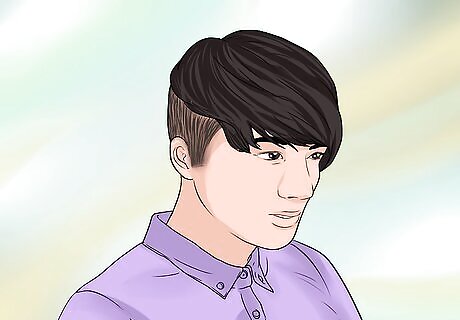
Keep the back of your hair short. When you grow out a pixie cut, the back of your hair will grow out longer than your front locks. Without proper maintenance, your once adorable pixie cut will turn into an unflattering mullet. To keep the mullet at bay, keep the back of your hair shorter and let the top of your hair continue to grow.
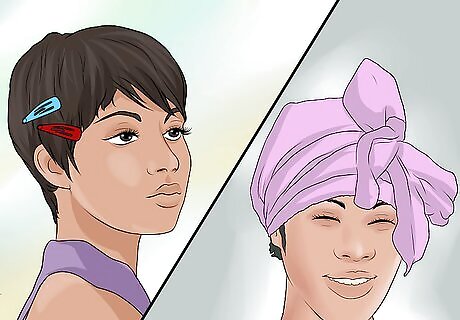
Experiment with different styles. Growing out your hair is a process that involves several awkward stages. As you work towards your goal length, remain patient with your locks and don’t be afraid to experiment with new styles and accessories. Pin your hair back with pins and clips Wear a cute headband or headwrap Play with color Opt for a hat on bad hair days Part your hair in different spots Add texture, curls, and or volume
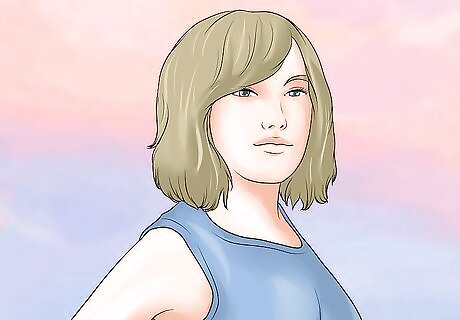
Blend the different lengths together into a bob. Overtime, the top of your hair will gain some length. As soon as this happens, stop trimming the back of your hair and let it grow out. When the back of your hair nears the same length as your front locks, ask your stylist to blend the two layers together into a bob. The bob may be shaggy or blunt.
Transitioning a Bob to a Lob

Continue to get regular trims. As your hair transitions from a bob to a lob, or long bob, it is important that you continue to visit your hairdresser for frequent trims. Every six to eight weeks, ask your stylist to take off ¼ inch of hair. This will remove the split ends and keep your hair looking healthy as it grows out.
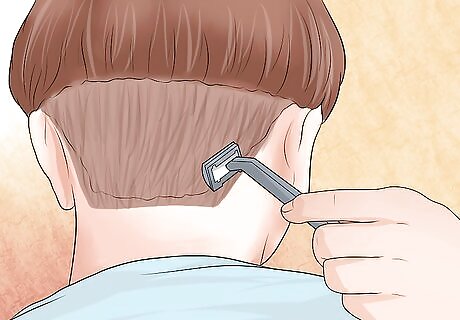
Thin the ends of your hair as needed. If your hair is very thick, your bob may require additional maintenance. As your thick hair grows, the base of your bob may widen. In the hair industry, this is called the mushroom-effect. To avoid this, ask your stylist to thin just the ends of your hair with a razor.

Keep your lob off your shoulders with texture, curls, and volume. As soon as your hair hits your shoulders, the ends will flip out in an unflattering way. Until your hair grows past your shoulders, you should do your best to keep the ends off your collar bone. To achieve this, consider applying one or more of the following methods: Curl your hair with a 1 inch barrel to shorten the strands slightly Add beach waves and texture to your hair to shorten the strands Add volume to your roots to lift the hair off your shoulders.
Growing out Your Bangs
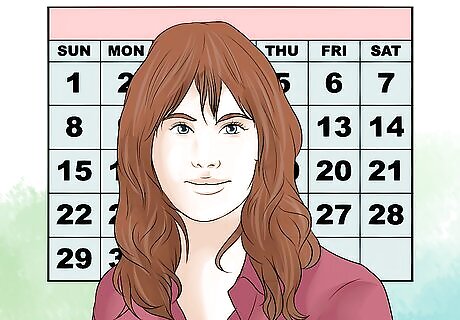
Wait for bangs to grow past your brows to push to the side. When you transition from short to long hair, it is inevitable that you will have bangs at some point in the process. If you are growing out blunt bangs, wait for the hair to grow past your eyes. At this point, part the bangs down the center and push them to the sides of your forehead.
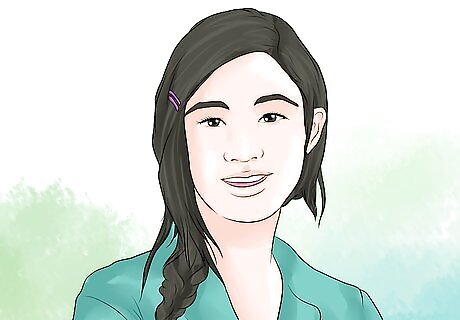
Hide your awkward bangs with different styling tricks. As your bangs grow out, they will reach awkward, in-between lengths. While you can’t avoid this stage, you can use clever styling tricks and accessories to hide your not-quite-bangs. Pull your bangs back with a headband or hair wrap Braid your bangs along your hairline Pin your bangs back with pins and clips

Turn your bangs into layers. During the bob stage, your bangs may near the length of the rest of your hair. At this point, ask your stylist to blend your bangs with the rest of your hair. He or she can achieve this by creating layers.
Growing Out Natural Hair
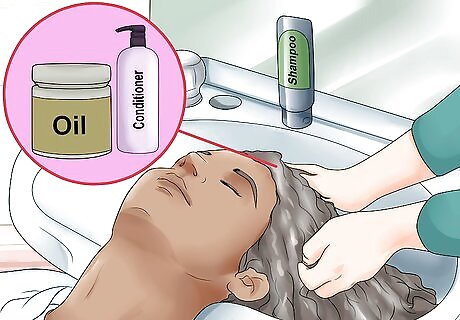
Moisturize your hair. It's harder to grow out hair that is dry and prone to breakage. With frequent moisturizing treatments, you can rehydrate your strands and maintain your length. Wash your hair with a moisturizing shampoo and conditioner Deep condition your once or twice a week Seal in the moisture with oil or shea butter Do not let your hair dry out
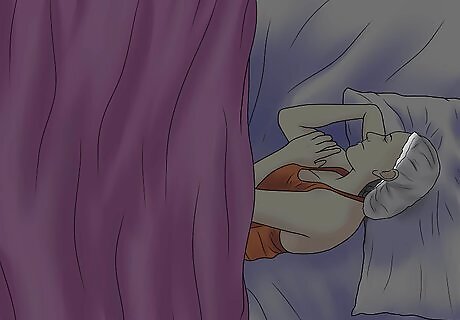
Protect the ends of your hair. The new growth that occurs near your scalp is healthy and strong. The ends of your hair, however, have sustained the most damage and are therefore more likely to break. This breakage will result in a major set back to your growth goal. You can protect the ends of your hair by: Removing split ends Moisturizing your hair Opting for protective hair styles Sleep with your hair wrapped in a silk scarf
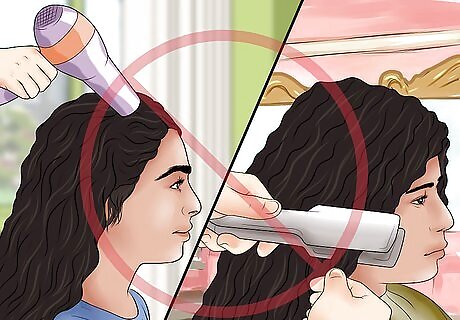
Avoid chemicals, heat, and high manipulation. Treating your hair with harsh chemicals, styling it with high heat, and manipulating it into intricate hair styles can damage the shaft significantly. Limiting your hair's exposure to chemicals, heat, and manipulation will improve the health of your hair and reduce your risk of breakage. Manipulation includes excessive twirling of your hair, detangling dry hair with a brush or comb, and unnecessary touching




















Comments
0 comment